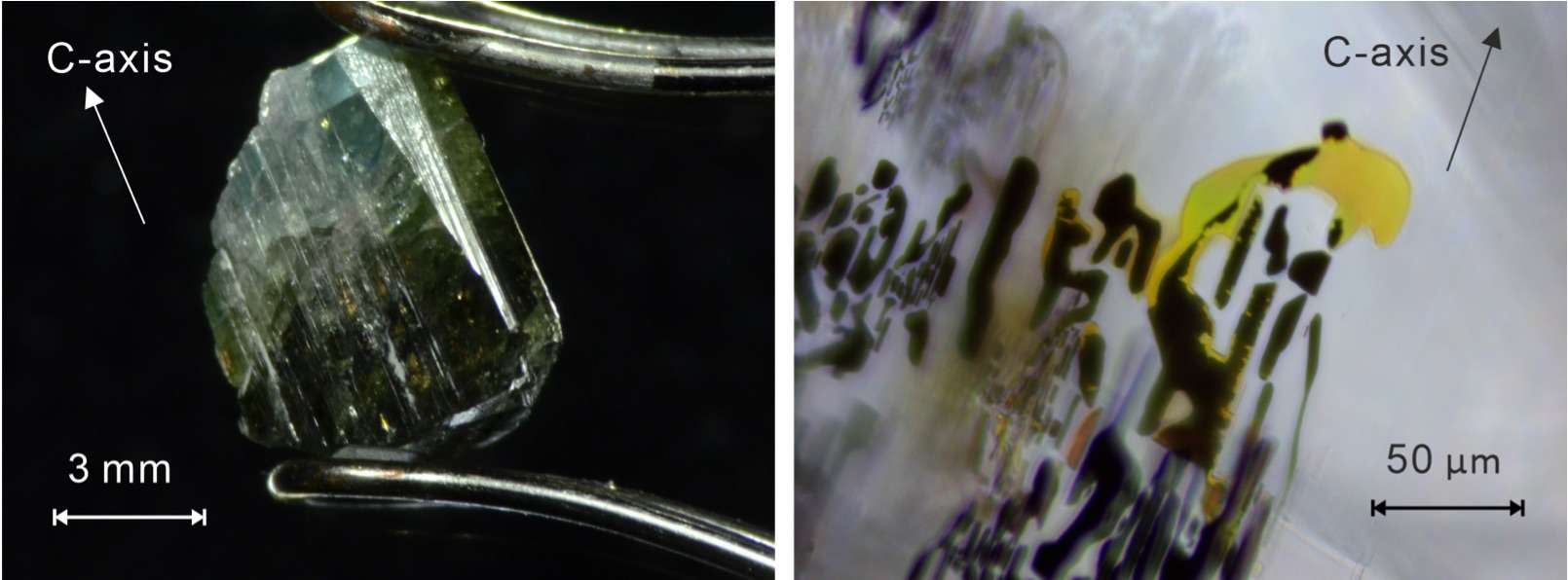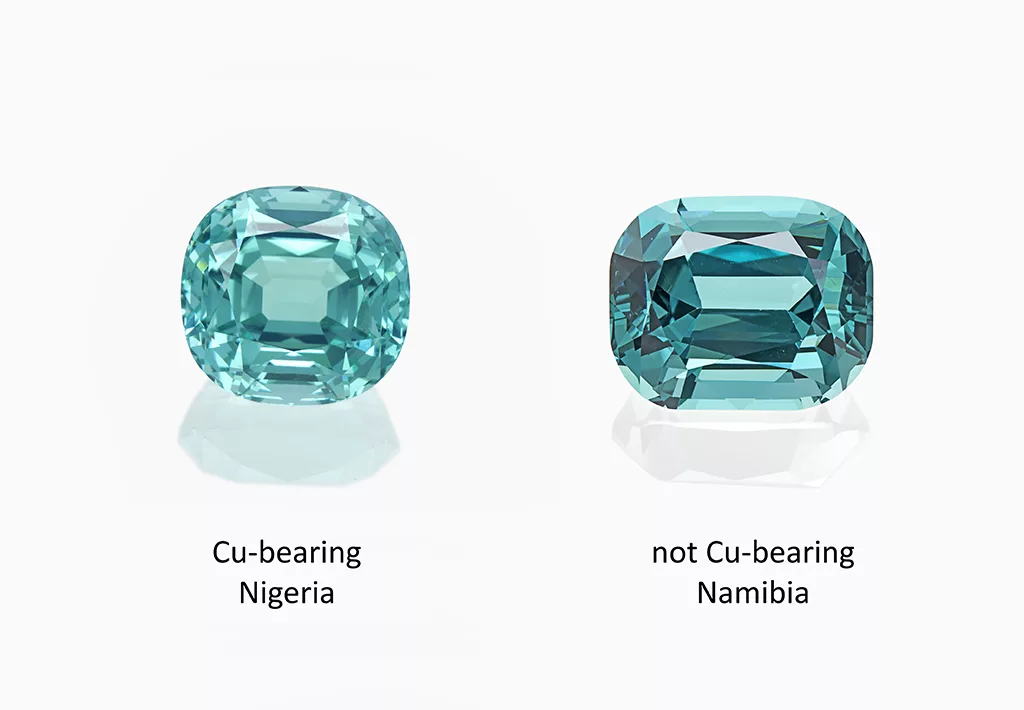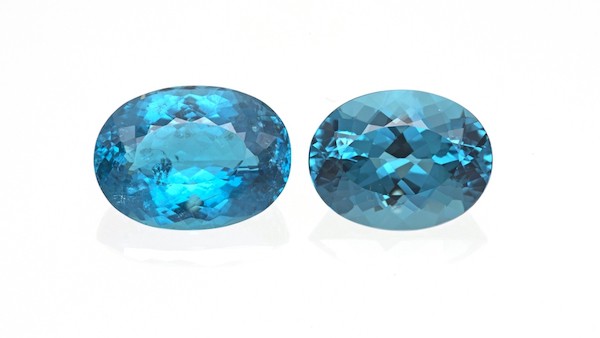
A perfect match: Paraiba tourmaline and Indicolite tourmaline
First published in Facette 28 (May 2023)
A few months ago, a client submitted to SSEF two tourmalines of attractive and matching shape, size and colour, both supposedly being Paraiba tourmalines (Figure 1).
Chemical analyses and absorption spectra (UV-Vis-NIR) quickly revealed that their composition and colour cause was much less matching than their visual appearances.
The slightly larger stone of 10 ct (left in Figure 1) contained minor concentrations of copper (CuO 0.24 wt%) but no iron. In contrast to this, the slightly smaller stone of 8.5 ct (right in Figure 1) showed no copper at all but a distinct concentration of iron (Fe2O3 2.0 wt%). Absorption spectra confirmed their identity, showing distinct Cu-absorption bands in the left stone but only an Fe-related band at about 710 nm. Both, we and our client were astonished to learn that these two very similar looking tourmalines in fact were a Paraiba tourmaline (left) and an indicolite tourmaline (right). This case demonstrates well that having your gems tested might be very wise before making major buying decisions, specifically in the fast-paced environment of a jewellery show.
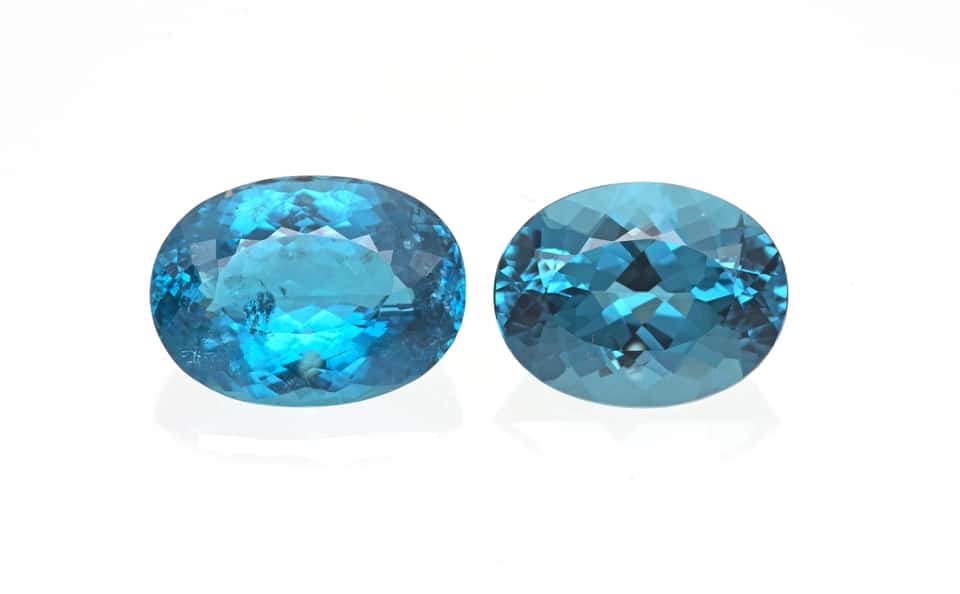
Want to learn more about toumalines?
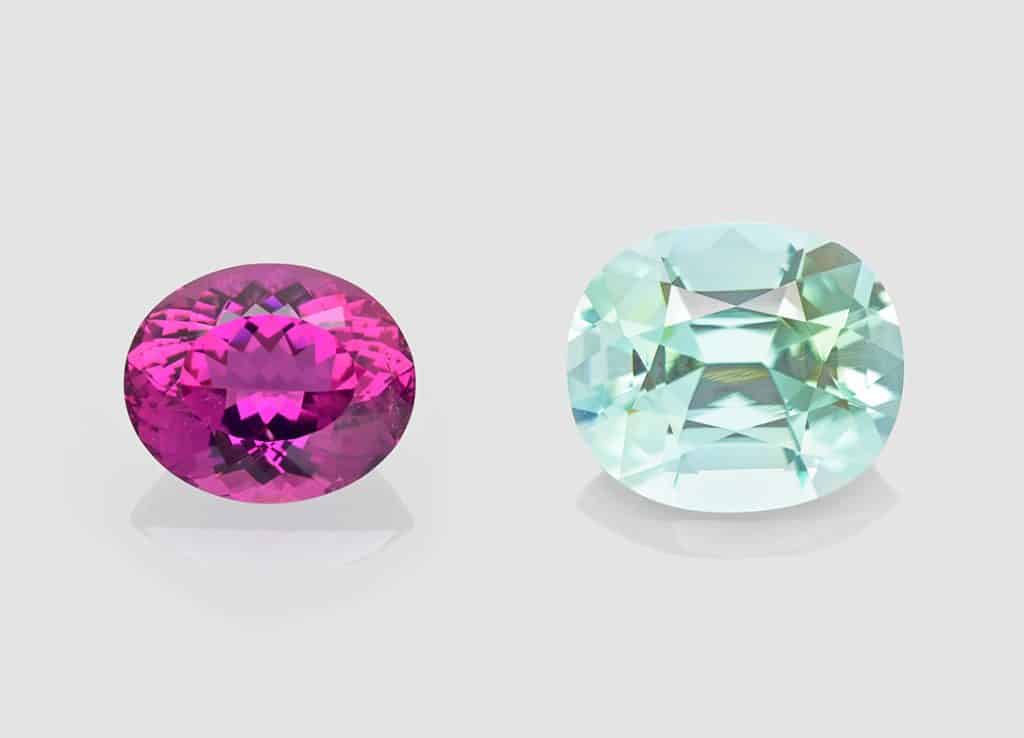
Start your journey to becoming a tourmaline expert with our free online course “Introduction to tourmalines”.
Learn all about tourmalines. Their fascinating history, how they form, where they come from. Learn about all the different origins of tourmalines and their treatments. Take this course as an introduction to the wonderful world of tourmalines.
